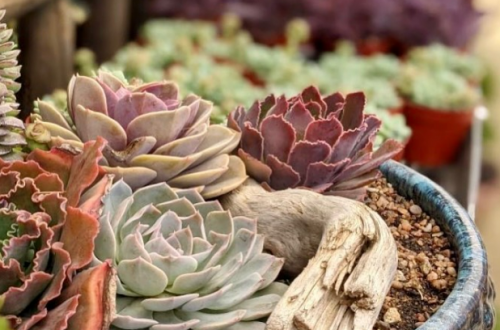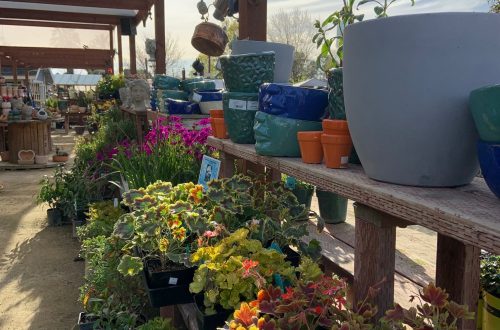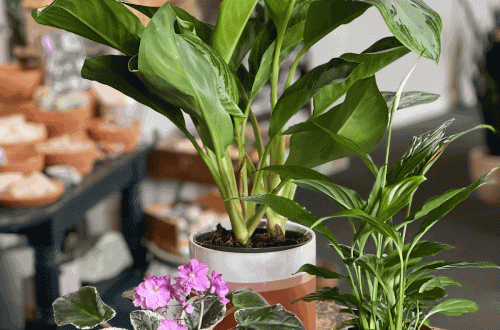Whether you’re a seasoned green thumb or a budding enthusiast, the act of plant propagation is a fascinating and rewarding practice that opens up a world of possibilities. Plant propagation is the process of creating new plants from existing ones, allowing you to expand your garden or indoor plant collection without having to purchase additional specimens. There are several methods of propagation, including stem cutting, division, leaf cutting, and seed sowing. We find success year after year, propagating a variety of houseplants – including: Pothos, Sansevieria, Spider Plants, Monstera, Philodendron, and more. In this post we’ll focus on leaf & stem cuttings as well as division. Through understanding these methods of propagation, you too can multiply your favorite plants with very little effort. Ready to get started?
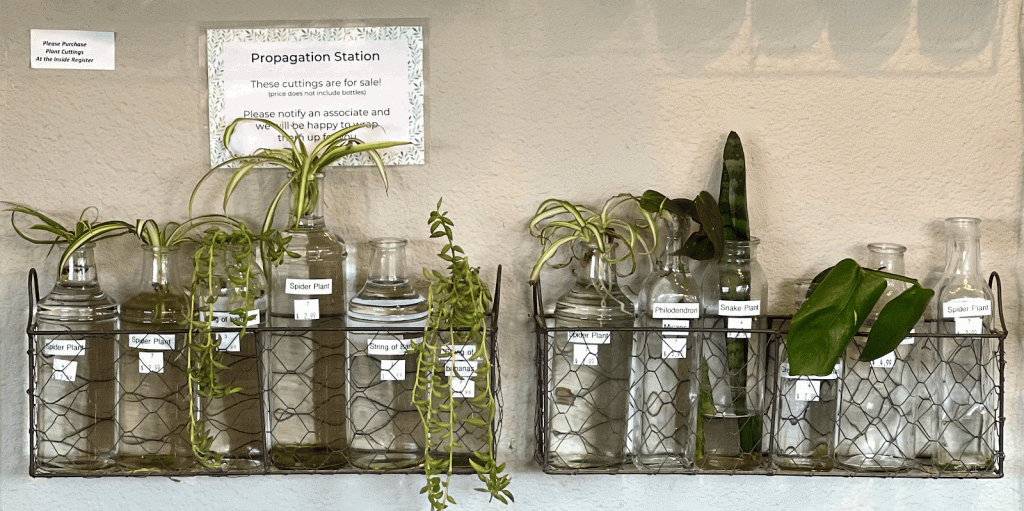
Our propagation station at The Secret Garden has a variety of plant cuttings for sale.
3 Easy Propagation Methods
1 – DIVISION
Division: Propagation by division is as it sounds. The mother plant is “divided” into two or more sections by dividing/separating at the roots. Look for plants that have more than a single stem coming up from the soil. Remove the plant from its pot and then separate/divide up the plant, making sure that each stem has roots. Now each new section can be repotted. Since these new plant pieces have everything they need right away, ie: roots, stems and leaves, this method has a very high success rate. The following list of plants are great candidates for this method of propagation:
- Bromeliads
- Spider Plants
- Calatheas
- Dracaenas
- Orchids
- Pilea – Chinese Money Plant
- Peace Lily
- Bird of Paradise
- Zamioculcas Zamiifolia (ZZ)
- Sansevieria
2 – STEM CUTTINGS
Stem Cuttings: Propagation by stem cutting involves cutting a plant stem, making sure the new piece includes a node. Including one or more nodes is very important since it’s from the node that new roots will grow. Make your cut with sharp scissors or pruning snips and make the cut on an angle. Stem cuttings can then be placed either in water or directly in soil to grow their new roots.
A) Stem Cuttings Using Water Propagation – This process is the easiest, cheapest, and works great at promoting new roots to form. Personally I love to have little bottles of plant cuttings on my window sills, especially during winter when not much else is green outdoors. As the weather becomes cooler in the Fall, I often take stem cuttings of my outdoor plants as I’m cleaning up for winter. These then come inside to fill my home with more plants and to root over winter.
- Be sure water covers the nodes
- Remove any leaves that would be below the water line
- Keep water clean (changing regularly)
- Place in an area that receives bright light (grow lights can be used)
- Once the roots are 2-3″ in length, move the plant into a pot of soil
Water propagation is an excellent way to grow your houseplant collection (pun intended!) And let’s face it, it’s also super rewarding to be able to watch the roots develop and grow. The same thing IS happening when you propagate in soil, but you just don’t get to watch.
. .
🌿Just remember that successful water propagation is subject to plant type, whether the cutting includes a node, timing, patience and even a little luck. Look at it as an experiment – enjoy the successes and learn from the failures. 🌱💚
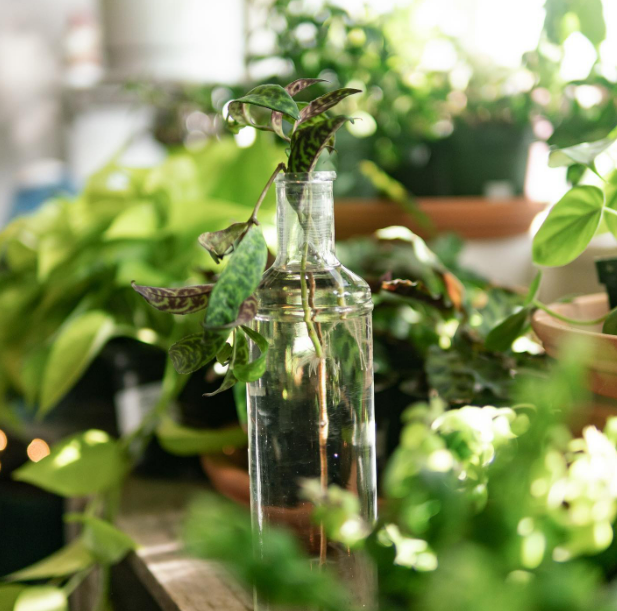
B) Stem Cuttings using Soil Propagation – This method works well as long as you maintain consistently moist soil. If done successfully you can avoid the step of acclimating water propagated roots over to soil later.
- Remove any leaves that would be below the soil line
- Be sure at least one or two nodes are covered with soil
- Use a light, fluffy soil medium such as a potting soil amended with peat moss. This will make root development easier for the plant.
- Keep the soil moist but not saturated
- Slip a clear plastic bag over the pot to act as a miniature greenhouse. This will keep the humidity levels up to ensure the soil doesn’t dry too rapidly and also encourage root growth. This can be removed once the roots have grown.
The following are great candidates for the stem cutting method either by water or soil:
- African violets
- Begonias
- Coleus
- Ficus
- Philodendrons
- Pothos
- Tradescantia
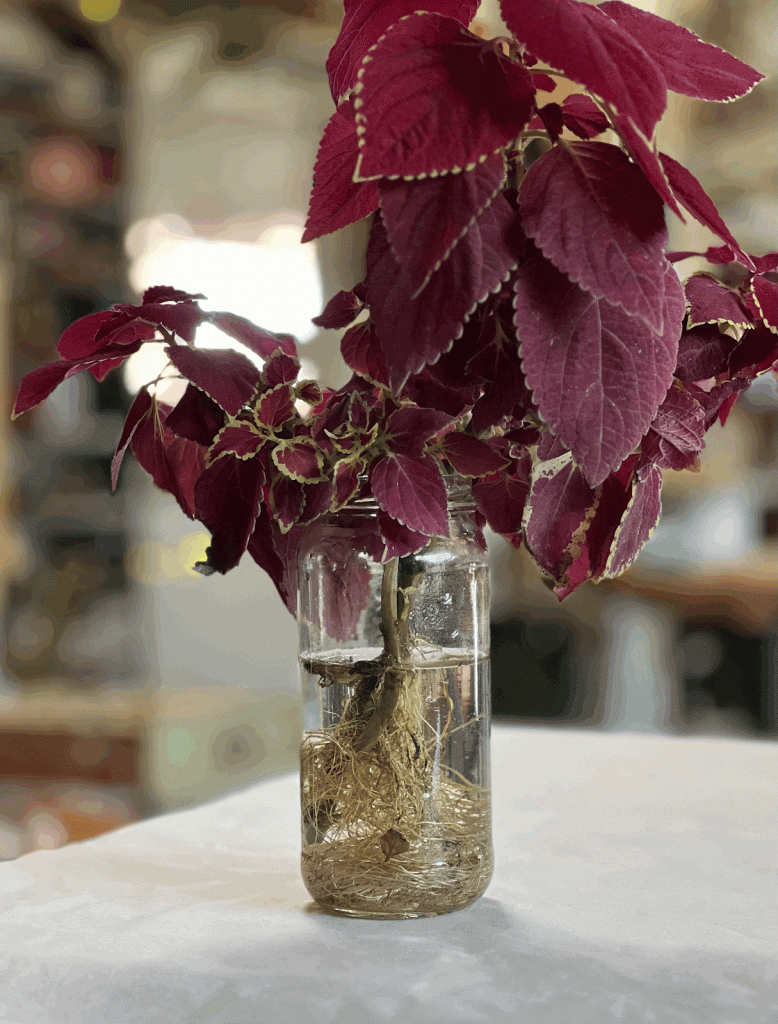
Coleus stem tip cutting rooting in water.
3 – LEAF CUTTINGS
Leaf Cuttings – This method works just like stem cuttings, except since there effectively isn’t a stem, the leaf needs to develop roots without the benefit of a node. While propagating with leaf cuttings can still be successful, they take much longer and are more likely to rot. Usually I don’t set out to propagate by leaf cuttings, but since I have a hard time throwing away plant material, I may try and propagate leaves that I’ve cut off while taking stem cuttings. I tried ZZ plant leaves once and they took over two years to develop roots. Talk about a lesson in patience!

Conclusion
Now that you know several easy ways to propagate your plants to make more plants, will you give it a try? I hope you’ll find confidence in the fact that propagating your plants through careful trimming actually helps them rather than harms them. I like to think of taking stem cuttings as a kind of insurance policy. This way if anything happens to the mother plant, I already have another one in the wings! Trust me, I know it’s scary to cut a healthy piece off your plant. However, with each trim, you’re actually promoting new growth and benefiting its overall health. Let us know in the comments what your greatest success or challenge has been with propagating. We’d love to hear from you.
Thank you to Courtney Giles for her help with this post.


